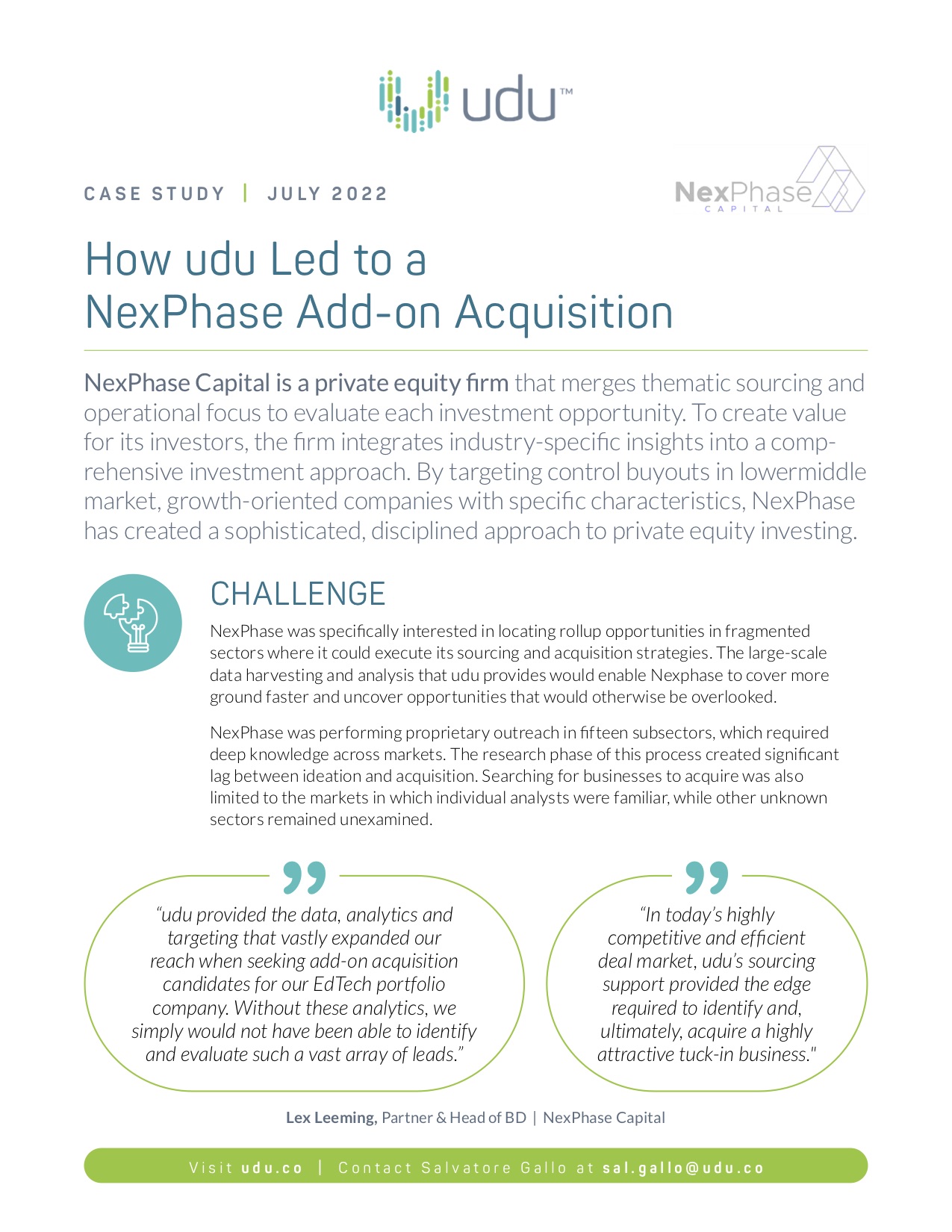Everything You Need to Know About Middle Market Private Equity
Smaller companies looking for growth capital and/or shareholder liquidity are likely seeking the attention of the best lower middle market private equity (PE) firms. There are more than 350,000 middle market companies in the U.S. alone. Yet, when it comes to securing capital, it can be more challenging for those in the lower middle market because of their size or lack of financial sophistication.
So, how can these companies tell if they’re ready to secure an outside investment from lower middle market PE firms? And if they decide to partner with a PE firm financially, how can they ensure they choose the right one?
Businesses should keep a few key things in mind when they’re on the hunt for capital from a PE firm. Keep reading to find out what those things are, get guidance on choosing the best middle market PE firms, and learn how mid-size private equity firms can find the perfect investment opportunity fast.
Lower Middle Market vs. Middle Market vs. Large-Cap
The middle market is divided into two sectors: core middle market and lower middle market. The difference generally boils down to transaction size.
Lower middle market PE firms typically invest in companies valued between $10 million and $100 million. The sweet spot for mid-market private equity transactions is typically between $100 million and $500 million. And while some define middle market deals as those up to $1 billion, typically, large-cap private equity deals are $1 billion and above. It’s worth noting that limited partner (i.e., investor) returns from middle market PE funds are historically higher than those of large-cap funds.
Lower middle market PE firms face unique challenges not always faced by middle market and large-cap PE firms. Broadly speaking, lower middle market companies are less developed including management depth, software and systems, and robust planning and control processes. Additionally, lower middle market companies are usually much more niche. That means that lower middle market PE firms better understand the challenges and opportunities businesses face in the lower middle market, allowing them to provide more tailored financing and support.
Why Should PE Firms Invest in the Lower Middle Market?
If you’re looking to deploy capital into the lower middle market, this segment offers several advantages to PE firms. Let’s expand on these a bit:
1. Higher ROI. Investors are attracted to lower middle market portfolios because these platforms can generate compelling returns compared to larger deals.
2. Less Efficient Segment. Lower middle market companies frequently have lower valuations and less competition for investment capital than their larger counterparts. Additionally, there are opportunities to make value-enhancing operational improvements further to accelerate growth, profitability, and ultimately exit value.
3. No Exit Plan. Baby Boomers account for an estimated 2.3 million small businesses in the United States. A large number of them are thriving, but nearly 60 percent have no succession or exit plan in place.
4. Consolidation. Consider investing in niche sectors of the lower middle market where your PE firm has sector expertise, allowing you to lead consolidation strategies and create more value.
Next, we turn to middle market companies, explaining how they can tell if they’re ready for an investment from a PE firm.
How Do Companies Know If They’re Ready for an Investment?
Not every business needs, wants or is ready for private equity investment. But companies looking for capital from mid-size private equity firms have usually outgrown traditional forms of financing, like senior and subordinated debt. They might also be ready to expand rapidly, get “sell-ready,” or make a major acquisition.
These key indicators can help you determine if your company is ready for a little outside help:
1. You have a solid track record of growth and profitability.
2. You have a management team capable of scaling the company.
3. You need capital to fuel growth and expansion.
4. You want a long-term partnership.
5. You’re willing to give up some control in exchange for capital and resources.
If these indicators apply to you, your company might just be ready for a mid-market private equity investment. This strategic move can help you lock in the capital support and operational resources you need for faster growth and a successful future.
How to Choose the Best Lower Middle Market Private Equity Firms
Finding the best lower middle market private equity firm is no small task. But it can provide the capital and resources needed to fuel massive growth. So, for lower middle market companies, keep these things in mind as you look for the best middle market PE firm.
1. Develop a robust strategic plan.
Before interviewing PE firms, you must have a clear strategic roadmap with well-defined business goals. This plan will help determine the size and type of investment you wish to secure so you can clearly communicate your requests to investors.
2. Understand the firm’s investment strategy.
Make sure you’re looking at firms that have experience investing in your industry and at your stage of development. Understanding the best lower middle market private equity firm’s investment strategy will help you determine if they’re a good fit for your goals.
3. Ask for references and learn about past experiences.
To make a more informed decision, ask the top contending lower middle market PE firms for references from both present and past portfolio company owners and management similar to your company. Their track record of working with past acquisitions can speak to the type of partner and partnership you’re considering.
These are just a few factors that can help you choose the best path forward for your company. Now, we return to private equity firms and how they can find the right investment opportunities more efficiently.
PE Firms: How to Find the Perfect Investment Opportunity
Finding the right lower middle market company to invest in can be exhausting, especially if you’re searching manually. At udu, we help the best lower middle market private equity firms source new acquisition opportunities faster.
udu is a private equity deal sourcing tool that leverages the latest advancements in data harvesting, natural language processing (NLP), and machine learning (ML). Here’s how it works:
- Match criteria. Input your criteria for targeting the right opportunities.
- Search. udu will then sift through thousands of data sources to find qualified targets that humans would likely miss.
- Transform, structure, train. Relevant results are structured, scored, then iterated based on your feedback to improve udu’s algorithm.
- Final results. The results use customer preferences to score and rank the data as if they had done it themselves, so they know where to focus their efforts.
udu enables PE managers to gain a competitive edge in the marketplace by enlisting the help of AI-powered deal sourcing strategies. Ready to see how udu can help your PE firm source more niche, qualified acquisition opportunities? Schedule a demo to learn how udu can help your PE firm find the perfect investment today.

